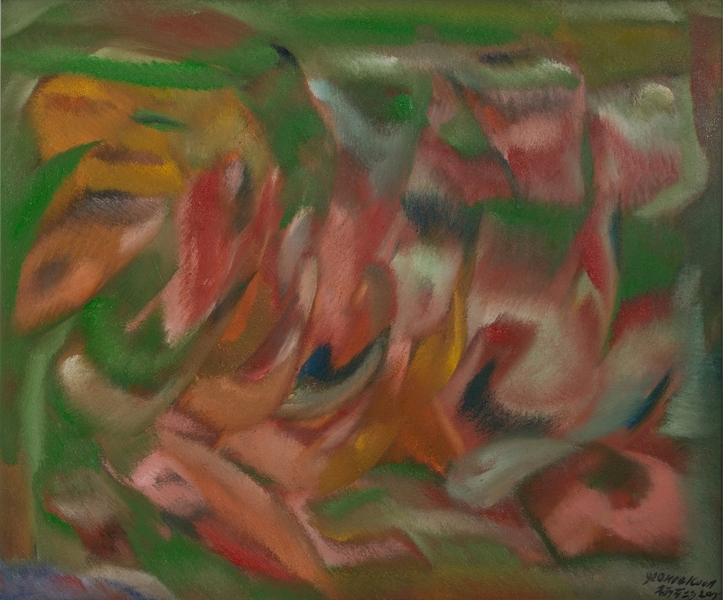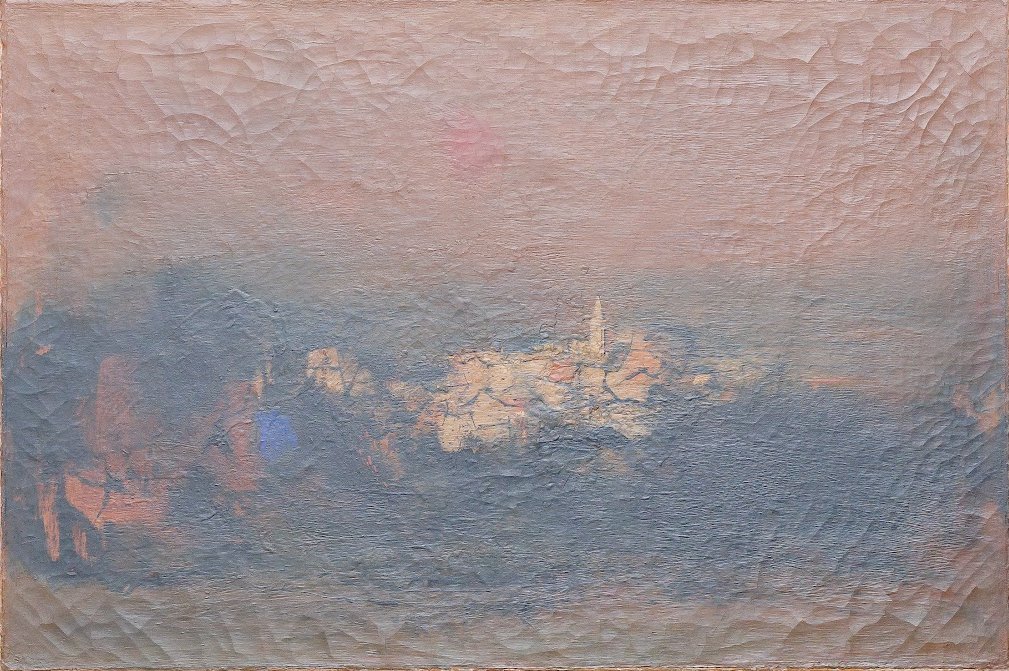Acrylic Painting on Canvas Team Bonding Art Jamming Singapore Visual Arts Centre
























Yeo Hoe Koon
Oil on Canvas
64 x 89.5 cm
Price Range: $16,000 - $20,000

Yeo Hoe Koon
Oil on Canvas
101 x 123 cm
Price Range: $26,000 - $32,000

Chen Wen Hsi
Chinese Ink and Color on Paper
50 x 54cm
Price Range: SGD $42,000 - $50,000

Cheong Soo Pieng
Red Tone
61 x 91.5cm
Price Range: SGD $108,000 - $138,000

Cheong Soo Pieng
Abstract Landscape
50 x 61cm
Price Range: SGD $95,000 -$128,000

Fan Shao Hua
Chinese Ink and Colour on Paper
100 x 100cm
Price Range: SGD $9,800 - $14,800

Fan Shao Hua
Chinese Ink and Colour on Paper
100 x 100cm
Price Range: SGD $8,800 - $13,800

A new arts centre will open on Sunday at Dhoby Ghaut Green – a 11,000 sq m park which includes an amphitheatre and open lawn spaces just above the MRT station.
The Visual Arts Centre, comprising a 161 sq m gallery for exhibitions and an 84 sq m studio for classes and workshops, has been developed in the glass building formerly occupied by a restaurant.
It aims to ease the crunch for affordable exhibition space in town and strengthen the arts theme of the seven-year-old park.
The National Parks Board (NParks), which leased the building to art gallery owner Iola Liu after a public tender last year, hopes it will allow park visitors to enjoy more arts-related recreational activities.
“Arts recreational activities are known to be therapeutic and these leisure activities can help to enhance the well-being of park users,” said NParks’ Lifestyle Business Division director Tan Lai Kheng.
Singapore Management University: The de Suantio Gallery (180 sq m):
$900 per day
Nanyang Academy ofFine Arts: Ngee Ann Kongsi Gallery 1 (258 sq m) andGallery 2 (271 sq m):
$900 per day
Singapore Chinese Chamberof Commerce and Industry Building Exhibition Hall (approximately 200 sq m):
$1,000 (weekends) and $850 per day
The Substation: Ground FloorGallery (113 sq m):
$730 per day
The Art House : ExhibitionGallery (approximately 200 sq m):
$750 per day for commercial galleries
ION Art Gallery(approximately 500 sq m):
$575 per day for practising artists only
She explained that the site was chosen as it blends well with the surrounding arts-related buildings, such as the School of the Arts, Cathay Building and the National Museum Singapore.
Ms Liu, 25, the new centre’s director and Gallery Asia Art Collective owner, said she spent the past three months and nearly $200,000 turning the former restaurant into a gallery and art studio. She has already lined up a series of foundation art courses such as those in oil painting, drawing and sketching to begin by the end of next month.
Workshops and talks by both local and visiting artists from overseas are also being planned.
“There is a shortage of exhibition space, especially in the town area, and with our rate at only $650 a day with no extra charges, it is probably the most attractive,” said Ms Liu.
She said rental rates of exhibition space nearby range from as high as $900 a day at the Singapore Management University, Nanyang Academy of Fine Arts and the Singapore Chinese Chamber of Commerce and Industry Building to between $575 and $750 a day at other venues such as ION Art Gallery, the Substation and The Art House at the Old Parliament Building.
“Their prices do not include extras like GST, administration and other charges, though some of their premises may be slightly bigger than ours.” she added.
Ms Liu has already had many inquiries to book the venue. First to rent the centre’s space is the Federation of Art Societies Singapore, an umbrella body for 31 local art groups. It is holding a two-week exhibition jointly with art societies from Malaysia and China to showcase the works of artists from the three countries from Sunday at 2.30 pm.
China-born Singapore artist Fan Shaohua, 53, who is among the seven Singapore artists taking part in the show, said: “The centre’s location is excellent and I am happy to be among the first to show my works there.”
Ms Liu said: “We will be encouraging more Singapore artists to hold their shows at our centre. Later, talks and tours on the exhibitions will also be organised to benefit those who want to know more.”
The Visual Arts Centre will be open daily from 10am to 10pm.
Visual Arts Centre Exhibition Gallery (VAC) is a glass house exhibition gallery and studio, situated in the prestigious and cultural Arts and Heritage district of Dhoby Ghaut. In the heart of town, at the start of Orchard Road, Visual Arts Centre is centrally located and conveniently accessible via all modes of transportation like bus and Dhoby Ghaut MRT.
Address: 10 Penang Road, #01-02 Dhoby Ghaut Green, S(238469)
Art & Design Exhibitions ( 7 days )
11am – 8pm daily. Inclusive of set-up & tear-down, $150 for every additional hour. The *first day of the exhibition is Tuesday by default.
-Extended hours of up to 10pm for one day only for Exhibition Opening ceremony.
-Handover to exhibitor: 1st day – 11am 7th day – 8pm
S$5,800/7 days & S$650/day for each subsequent day
Art and Design Exhibitions or Meetings ( <7 days )
11 am to 8pm daily. Inclusive of set-up & tear-down
Mon – Thu S$950nett/day Fri – Sun S$1200nett/day $150 per additional hour
Flea Market & Boutique Fairs ( minimum Fri – Sun)
Choice of 11 am to 8pm or 1pm-10pm daily. Inclusive of set-up & tear-down
_Three Days Fri – Sun at S$3600nett, $150 per additional hour; Mon – Thu at $950nett/day _
(SPECIAL PROMOTION) S$4,400nett for Thursday to Sunday 11am – 8pm or 1pm – 10pm
Product Launches or Media Functions (1 day minimum hire period )
11am to 8pm daily Inclusive of set-up & tear-down
Mon – Fri S$ 2,200nett/day Sat – Sun $2,500nett/day $150 per additional hour.
The Exhibition Gallery space is a fully equipped indoor glasshouse exhibition space with 31 (1.2 x 2.5m) panels, hanging system, studio lighting, inbuilt sound and microphone system, projector, long tables and foldable chairs – all provided and complimentary for exhibitors hiring the Exhibition Gallery.
Yes, we allow at no additional cleaning fee
Yes! We can share with you our partner contacts upon space hire confirmation.
Our space is very popular for events like art exhibition, product launch, or private events. Please get in touch with us at Whatsapp http://wa.me/6562550711 or email us at info@visualartscentre.sg to arrange for guided site recce and we will assist you further on the space layouts & arrangement etc!
We will require full payment of hire fee with a $1000 refundable security deposit before the event. Kindly email us the payment screenshot for us to check and confirm the hire.
The exhibitor must notify the licensor immediately in an event that a cancellation is made and may be liable to pay for all losses and damages suffered by the Licensor. For this reason, the Exhibitor will only receive a certain percentage of refund by the Licensor as follows:
In the event where notification is received on a date:
i. Less than 120 days from event date: 80% refund
ii. Less than 90 days from event date: 50% refund
iii. Less than 60 days from event date: No refund
*The security deposit will be refunded in full to the Exhibitor
Click and get to our WhatsApp
Embark on a captivating journey into the vibrant world of digital art! Our Foundation in Digital Art workshop invites budding creatives aged nine and above to unleash their imagination and hone their artistic skills in a dynamic, supportive environment. From mastering basic digital tools to crafting mesmerizing digital masterpieces, children will explore a spectrum of techniques guided by seasoned mentors. Through hands-on activities and interactive sessions, participants will discover the endless possibilities of digital expression while fostering creativity and critical thinking. Join us for an exhilarating adventure where young artists transform ideas into stunning visual realities, igniting a passion for digital art
In the Batik Introduction Handkerchief Painting workshop, participants will learn the traditional art of batik, a wax-resist dyeing technique originating from Indonesia. The workshop begins with a brief history and overview of batik, highlighting its cultural significance and various techniques. Participants will then observe a demonstration of applying wax with tjanting tools and dyeing the fabric. Following the demonstration, each participant will design and create their own batik handkerchief, applying wax to create patterns and then dyeing their fabric. The workshop concludes with a group discussion, allowing participants to share their creations and reflect on their learning experience.